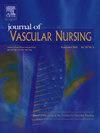尼泊尔外周动脉疾病患者健康相关生活质量差的决定因素
IF 1.2
Q3 NURSING
引用次数: 0
摘要
外周动脉疾病(PAD)是一种慢性动脉闭塞性疾病。它使死亡风险增加三到五倍,并降低与健康有关的生活质量。然而,在低收入环境中对这一主题的研究很少。因此,本研究旨在评估尼泊尔成人PAD患者的HQoL及其影响因素。方法本横断面研究纳入了在Dhulikhel医院心胸血管外科门诊(CTVS OPD)或外科病房接受诊断为PAD的患者。患者接受外周血管造影,伴或不伴血管成形术。采用方便抽样的方法选择参与者。我们使用社会人口学和SF - 36问卷对参与者进行访谈,在他们知情同意的情况下收集所需信息。收集的数据在SPSS version 21中进行分析。采用描述性统计和多变量回归分析来确定PAD患者健康相关生活质量的预测因素。结果本研究共采访了96名诊断为PAD的参与者。参与者的平均年龄为56.19(11.54)岁。在调整了社会人口统计学变量、合并症的存在和吸烟史后,研究发现健康状况与健康相关生活质量的各个领域之间存在显著关联。与无合并症患者相比,有合并症患者的身体功能评分明显较低(平均差异= -9.9;p = 0.01; 95% CI: -18.2至-1.7)。下肢受累的参与者的身体功能评分比上肢受累的参与者低18.8个单位(p < 0.01; 95% CI: -27.6至-10.02)。身体健康造成的角色限制在女性中比男性高13.4个单位(p = 0.009; 95%可信区间:3.4至23.5),在中等或以上教育程度的参与者中比文盲参与者高21.7个单位(p = 0.01; 95%可信区间:8.6至34.8)。有合并症的患者一般健康评分明显较低(平均差异= -5.3;p = 0.03; 95% CI: -10.4至-0.35)。与单侧上肢受累的个体相比,上肢受累的个体能量/疲劳评分降低了7.9个单位(p = 0.01; 95% CI: -14.2至-1.6)。女性参与者比男性经历了更大的情感角色限制,得分下降了10.4个单位(p = 0.02; 95% CI: -19.8至-1.1)。此外,与没有合并症的人相比,有合并症的人的情绪健康得分明显较低,减少了8.3个单位(p = 0.02; 95% CI: -15.4至-1.2)。总之,该研究强调了合并症、性别、受教育程度和肢体受累部位对健康相关生活质量各方面的重大影响。合并症一直与多个领域的较差结果相关,包括身体功能、一般健康和情绪健康。女性参与者和受教育程度较高的参与者报告了更大的角色限制,而下肢受累和上肢损伤与身体功能和能量水平的明显下降有关。这些发现强调需要针对临床和社会人口因素进行量身定制的干预措施,以改善受影响个体的生活质量。本文章由计算机程序翻译,如有差异,请以英文原文为准。
Determinants of poor health-related quality of life in people with peripheral arterial disease in Nepal
Introduction
Peripheral arterial disease (PAD) is a chronic arterial occlusive disease. It increases mortality risk by three to fivefolds and reduces health-related quality of life (HQoL). However, research on this topic in low-income settings is scarce. Therefore, this study aimed to assess the HQoL of patients with PAD and the factors influencing it in adults residing in Nepal.
Methods
This cross-sectional study included patients being reviewed at the Cardio Thoracic and Vascular Surgery Outpatient Department (CTVS OPD) or admitted to the surgical ward of Dhulikhel Hospital with the diagnosis of PAD. Patients were admitted for peripheral angiogram with or without angioplasty. Participants were selected with convenience sampling. We interviewed participants using socio demographic and SF 36 questionnaires to collect required information with their informed consent. Collected data were analyzed in SPSS version 21. Descriptive statistics and multivariable regression analysis was conducted to identify the predicting factors of health-related quality of life among the participants with PAD.
Results
A total of 96 participants with the diagnosis of PAD were interviewed for the study. The mean age of the participants was 56.19 (11.54) years. After adjusting for socio-demographic variables, presence of comorbidity, and smoking history, the study found significant associations between health conditions and various domains of health-related quality of life. Individuals with comorbidities had significantly lower physical function scores compared to those without comorbidities (mean difference = -9.9; p = 0.01; 95 % CI: -18.2 to -1.7). Participants with lower limb involvement had an 18.8-unit lower physical function score than those with an upper limb affected (p < 0.01; 95 % CI: -27.6 to -10.02). Role limitation due to physical health was 13.4 units higher among females compared to males (p = 0.009; 95 % CI: 3.4 to 23.5), and 21.7 units higher among those with secondary education or above compared to illiterate participants (p = 0.01; 95 % CI: 8.6 to 34.8). General health scores were significantly lower among those with comorbidities (mean difference = -5.3; p = 0.03; 95 % CI: -10.4 to -0.35). Compared to individuals with a single upper limb affected, those with upper limb involvement exhibited a 7.9-unit reduction in energy/fatigue scores (p = 0.01; 95 % CI: -14.2 to -1.6). Female participants experienced greater emotional role limitations than males, with a 10.4-unit decrease in score (p = 0.02; 95 % CI: -19.8 to -1.1). Additionally, individuals with comorbidities had significantly lower emotional wellbeing scores compared to those without, with an 8.3-unit reduction (p = 0.02; 95 % CI: -15.4 to -1.2).
Conclusion
In conclusion, the study highlights the substantial impact of comorbidities, gender, educational level, and the location of limb involvement on various aspects of health-related quality of life. Comorbid conditions were consistently associated with poorer outcomes across multiple domains, including physical function, general health, and emotional wellbeing. Female participants and those with higher educational attainment reported greater role limitations, while lower limb involvement and upper limb impairment were linked to more pronounced declines in physical function and energy levels. These findings underscore the need for tailored interventions that address both clinical and socio-demographic factors to improve quality of life in affected individuals.
求助全文
通过发布文献求助,成功后即可免费获取论文全文。
去求助
来源期刊

Journal of Vascular Nursing
NURSING-
CiteScore
1.40
自引率
0.00%
发文量
33
期刊介绍:
Journal of Vascular Nursing provides clinical information regarding aortic and peripheral aneurysms, upper and lower extremity arterial disease, acute and chronic venous disease, and more. Original, peer-reviewed articles present descriptions, etiologies, diagnostic procedures, medical and surgical treatment and nursing implications of vascular system disorders.
 求助内容:
求助内容: 应助结果提醒方式:
应助结果提醒方式:


